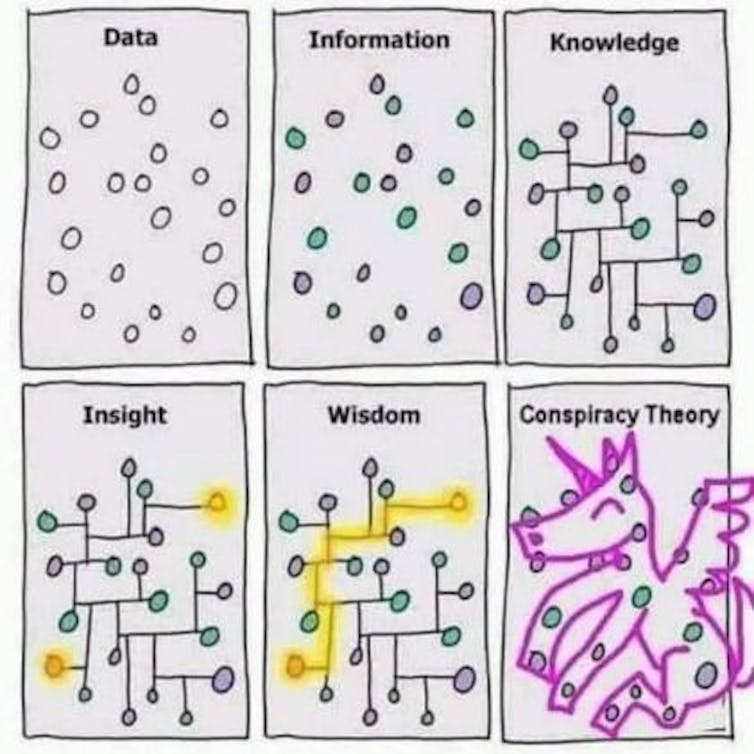Peter Hall, Pennsylvania Capital-Star
May 4, 2024

The March 2023 conjunction of Jupiter and Venus photographed from the International Space Station. The appearance of the two planets close together in the sky prompted multiple UFO reports in Lebanon County, according to records from the Pennsylvania Emergency Management Agency. (NASA photo)
Mysterious lights following a motorist on a dark country road, a saucer-shaped craft hovering over a suburban subdivision, and a flaming orb falling into the woods are among phenomena Pennsylvania residents have reported to authorities, state records show.
After the head of the Pennsylvania Emergency Management Agency (PEMA) casually mentioned during a legislative hearing earlier this year that the agency tracks UFO sightings, the Capital-Star obtained records showing PEMA has investigated more than a dozen such events in the last decade.
“We take all reports and we share it with the appropriate agencies to be able to investigate,” Padfield told members of the state House Appropriations Committee in February.
Often dull and tedious, state budget hearings nonetheless are a chance for the Legislature to grill administration officials about how they plan to spend the taxpayers’ money.
The cabinet secretaries flesh out the details of the governor’s budget proposal but deliver few bombshells. Every once in a while, however, an answer prompts lawmakers to look up from their stacks of white papers with surprise and demand more.
It was thus as Pennsylvania Emergency Management Agency Director Randy Padfield fielded a question from state Rep. Ben Waxman (D-Philadelphia) about potential threats to the state’s nuclear power plants from drones and unmanned aerial vehicles.
“We have had reports of unidentified flying objects in the past,” Padfield said before quickly moving on to the role of the Federal Aviation Administration in regulating drones.
“So, wait. Run that back again. What did you say about UFOs?” House Appropriations Committee Chairperson Jordan Harris (D-Philadelphia) asked when Padfield had finished his answer.
Padfield replied that PEMA occasionally gets reports of lights in the sky from county 911 centers and upon investigation authorities can attribute them to astronomical or earthly sources, such as helicopter traffic around the Pennsylvania National Guard base at Fort Indiantown Gap.
“Most of them are unfounded, or they’re attributable to some other mechanisms,” Padfield concluded, prompting another follow up from Harris.
“So, what about the un-most?” Harris asked. “You’re talking like ET phone home or something?”
Padfield conceded that some sightings are “undefined” and are difficult to understand unless the person reporting the phenomenon gets pictures but everything is passed along to the appropriate agencies.
Not satisfied with Padfield’s answer, the Capital-Star filed a right-to-know request with PEMA seeking records of unidentified flying objects and aerial phenomena and, for good measure, “encounters with unknown beings including those of suspected extra-terrestrial or cryptozoological nature.”
PEMA responded, perhaps appropriately, on April 1, with 40 pages of records on UFO reports passed to the Commonwealth Watch and Warning Center, which receives reports of certain events from county emergency dispatch centers and distributes them to appropriate state and federal agencies.
The records PEMA provided in response to the right-to-know request go back to 2013, when the agency received a half-dozen UFO reports.
Padfeild said during the budget hearing that some sightings are easily explained. That was the case last year when multiple people called 911 in Lebanon County to report suspicious lights and a hovering object that made no sound.
One caller in Bethel Township reported that the lights had followed his wife from Hamburg in Berks County to their home and that the object was stationary in the sky above their house. Another in the city of Lebanon reported seeing an oval shape that changed colors from gray to black to transparent and all she could see were the object’s lights.
Those calls happened on March 1, 2023, which was the height of a convergence of Jupiter and Venus in the night sky, when the planets appeared to almost merge into a single point of light. The spectacular astronomical event had been widely reported in the news, PEMA’s records noted.
Stan Gordon, a Westmoreland County resident who operates a 24-hour UFO, bigfoot and cryptid reporting hotline, said he regularly receives reports from across the state. Gordon said he became fascinated with UFOs as a kid in the 1950s. He describes himself as the principal investigator of Pennsylvania’s most famous UFO case.
In 1965, residents across six states saw a fireball cross the sky. Residents of Kecksburg said they saw an object shaped like an oversized acorn make a controlled crash into the woods not far from where Gordon lived. Four years later, Gordon set up his hotline.
“It’s never stopped ringing,” Gordon said, adding that the number of cases, including reports of unexplained objects in broad daylight and at close range, has increased in recent years.
Many are resolved with a little bit of research, he said. “We’ve always taken these cases very open mindedly. We approach them scientifically.”
Starlink satellites, which are launched dozens at a time from a single rocket, appear as a train of lights in the early evening sky and have prompted many recent reports. High altitude balloons and plumes of rocket exhaust and other space research activities also look unusual but are attributable to human activity, Gordon said, adding that he has never seen a UFO himself.
Other reports are less easily explained.
On Sept. 21, 2023, a Shermans Dale man reported a UFO with eight vertical lights he described as white, yellow, and a hint of green hovering about 200 feet above the road near a Perry County gas station. The man attempted to take a video with his cellphone before the lights disappeared but he later discovered the video had not been saved, the PEMA records say.
A Lower Saucon Township man called the Northampton County 911 center Dec. 19, 2021, to report a flying saucer with seven or eight lights on its underside over his development. Police responded but it’s unclear from the records whether they took any action. PEMA provided the caller with contact information for Gordon’s hotline, the records say.
Montgomery County authorities investigated after an Upper Pottsgrove Township man reported a glowing orb about the size of a small aircraft fell from the sky on Sept. 15, 2014. The object, which he described as orange and yellow fire-colored, floated behind the treeline and did not reappear. An officer who responded reported seeing flashes in the area but no other suspicious activity.
“There are a lot of cases that are very, very detailed that are not easy to explain away,” Gordon said.
Pennsylvania Capital-Star is part of States Newsroom, a nonprofit news network supported by grants and a coalition of donors as a 501c(3) public charity. Pennsylvania Capital-Star maintains editorial independence. Contact Editor Kim Lyons for questions: info@penncapital-star.com. Follow Pennsylvania Capital-Star on Facebook and Twitter.





















